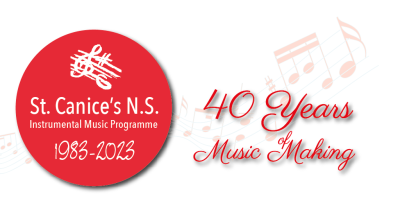Our Junior Infants have the opportunity to embrace music with a fun introduction to Violin in Baby Bows. Pre-Twinkle offers Junior Infants experience of the basic elements of music through singing, listening, moving and playing simple percussion instruments in a stimulating and exciting environment. Most of our Junior Infants join and enjoy both Baby Bows and Pre-Twinkle, whose programmes compliment each other very well.
Pre-Twinkle
Pre-Twinkle classes, provided to Junior and Senior Infant classes, provide an introduction to basic music skills for young children in a stimulating and fun atmosphere. This course is a pre-instrumental one which includes an introduction to music through singing, rhythm training and listening to music. It is based on the “Kodaly Method” of pre-instrumental training, which is based on teaching, learning and understanding music through the experience of singing. Pupils will have the opportunity to learn a repertoire of songs suitable for developing pitch, rhythm training through the use of percussion instruments and will become familiar with a varied range of instrumental works. The classes are 30 minutes in duration.
